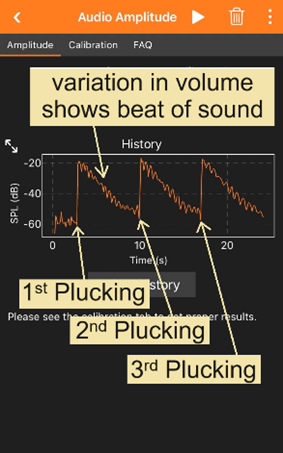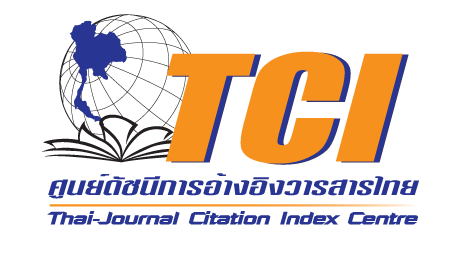A Home-Lab Experiment on the Resonance and Beats of Guitar Strings Using Phyphox
DOI:
https://doi.org/10.53848/ssstj.v12i2.1047Keywords:
Resonance, Standing waves, Beats, Harmonics, Guitar, Phyphox, Physics educationAbstract
This work presents an attractive way to teach high school students the concepts of resonance, standing waves, and beats of sound. The guitar and the application “Phyphox” are employed for demonstration. This work consists of three sections. Firstly, the first harmonic is discussed. The same note played from a guitar can be generated by different guitar strings. By plucking a single string, one can observe the resonant vibration of other strings with the naked eye. Secondly, higher-order harmonics are discussed. When plucking a string, many frequencies are generated. The author shows how to mute some harmonic frequencies by gently touching the string. The touching position becomes a node and the muted frequencies can be captured by Phyphox. Harmonics that do not have a node at this point attenuate immediately. This opens an opportunity to explain standing waves to students. Lastly, when two strings play very close frequencies simultaneously, the beat of sound can be captured by Phyphox or even perceived by the ears.
References
Aguilar, H. M., Maldonado, R. F., & Navarro, L. B. (2019). Using an electric guitar pickup to analyze bar vibrations. Physics Education, 54(2), 025018. https://doi.org/10.1088/1361-6552/aae662
Ait Ben Ahmed, A., Touache, A., ElHakimi, A., & Chamat, A. (2022). Dynamic study of pendulum systems through smartphone-based laboratory experiments. Physics Education, 57(6), 065017. https://doi.org/10.1088/1361-6552/ac8dda
Aji, M. P., Wulandari, Y. K., Setiawan, R., Karunawan, J., & Priyanto, A. (2022). A unique diffraction pattern formed by a grating from a flying termite wing. Physics Education, 57(5), 055026. https://doi.org/10.1088/1361-6552/ac8139
Andreotti, E., & Frans, R. (2019). The connection between physics, engineering and music as an example of STEAM education. Physics Education, 54(4), 045016. https://doi.org/10.1088/1361-6552/ab246a
Bonato, J., Gratton, L. M., Onorato, P., & Oss, S. (2017). Using high speed smartphone cameras and video analysis techniques to teach mechanical wave physics. Physics Education, 52(4), 045017. https://doi.org/10.1088/1361-6552/aa6f8c
Chatchawaltheerat, T., Khemmani, S., & Puttharugsa, C. (2021). Investigating the large angle of a physical pendulum using a smartphone’s sensors. Physics Education, 56(4), 045023. https://doi.org/10.1088/1361-6552/ac015c
Coramik, M., & Ürek, H. (2021). Calculation of kinetic friction coefficient with Phyphox, Tracker and Algodoo. Physics Education, 56(6), 065019. https://doi.org/10.1088/1361-6552/ac1e75
Dumrongkitpakorn, P., Khemmani, S., Plaipichit, S., Wicharn, S., & Puttharugsa, C. (2022). Measuring the average velocity and acceleration of a moving object on an inclined plane using a magnetic sensor on a smartphone. Physics Education, 58(1), 013002. https://doi.org/10.1088/1361-6552/ac9e39
Gabunilas, L. M., Santos, K. J. M., Buar, C. L., Castillo, J. M. L., & Pili, U. B. (2022). Improvising an apparatus for teaching sound waves using smartphones. Physics Education, 58(1), 015014.https://doi.org/10.1088/1361-6552/ac9efb
Goev, G., & Velinov, T. (2022). Precise measurements in mechanics using a moving light source and a smartphone. Physics Education, 57(4), 045020. https://doi.org/10.1088/1361-6552/ac59ce
Hechter, R. P., & Bergman, D. (2016). In harmony: Inquiry based learning in a blended physics and music class. Physics Education, 51(6), 065015. https://doi.org/10.1088/0031-9120/51/6/065015
Helseth, L. E. (2023). Transmission of electromagnetic waves from a plasma globe to a light emitting diode. Physics Education, 58(4), 043001. https://doi.org/10.1088/1361-6552/acce19
Koblischka, M. R., & Koblischka-Veneva, A. (2022). Measurement of the characteristics of the Earth’s magnetic field using a smartphone magnetic sensor. Physics Education, 57(4), 045021. https://doi.org/10.1088/1361-6552/ac61f0
Kuhn, J., & Vogt, P. (Eds.). (2022). Smartphones as mobile minilabs in physics: Edited volume featuring more than 70 examples from 10 years The Physics Teacher column iPhysicsLabs. Springer. https://doi.org/10.1007/978-3-030-94044-7
LoPresto, M. C. (2012). Experimenting with string musical instruments. Physics Education, 47(2), 227–233. https://doi.org/10.1088/0031-9120/47/2/227
Matsutani, A. (2021). Measurements of fundamental frequency shifts in the air cavity mode of a violin originating from changes in molecular weight and temperature. Physics Education, 56(4), 045022. https://doi.org/10.1088/1361-6552/abf749
Monteiro, M., Stari, C., & Martí, A. C. (2022). A home-lab experiment: Resonance and sound speed using telescopic vacuum cleaner pipes. Physics Education, 58(1), 013003.https://doi.org/10.1088/1361-6552/ac9ae1
Pereyra, C. J., Osorio, M., Laguarda, A., & Gau, D. L. (2018). Fourier analysis of a vibrating string through a low-cost experimental setup and a smartphone. Physics Education, 53(4), 045019.https://doi.org/10.1088/1361-6552/aac488
Pols, F. (2021). The sound of music: Determining Young’s modulus using a guitar string. Physics Education, 56(3), 035027. https://doi.org/10.1088/1361-6552/abef07
Puttharugsa, C., Khemmani, S., & Pimanpang, S. (2022). Measuring the kinematic parameters of a rotating object in circular motion using the magnetometer of a smartphone. Physics Education, 58(1), 013001. https://doi.org/10.1088/1361-6552/ac9e3a
Puttharugsa, C., Srikhirin, T., Pipatpanukul, C., & Houngkamhang, N. (2021). A multi-channel optical fibre-based smartphone spectrophotometer for measuring the spectra of LED colours. Physics Education, 56(4), 045017. https://doi.org/10.1088/1361-6552/abfb47
Serway, R. A., & Jewett Jr., J. W. (2004). Physics for scientists and engineers with modern physics (6th ed). Brooks/Cole.
Soares, A. A., Cantão, R. F., Pinheiro Jr, J. B., & Castro, F. G. (2022). Sound waves in a tube: measuring sound pressure profiles using smartphones. Physics Education, 57(5), 055023. https://doi.org/10.1088/1361-6552/ac7cb4
Torcal-Milla, F. J. (2023). Measuring the speed of sound with a pan flute and a smartphone: A half-melodic and totally-didactic experiment. Physics Education, 58(5), 055010. https://doi.org/10.1088/1361-6552/ace581
Torres, J. A., & Rendón, P. L. (2013). A simple method for synthesizing and producing guitar sounds. European Journal of Physics, 34(3), 503–510. https://doi.org/10.1088/0143-0807/34/3/503

Downloads
Published
How to Cite
Issue
Section
License
Copyright (c) 2025 Suan Sunandha Rajabhat University

This work is licensed under a Creative Commons Attribution 4.0 International License.











